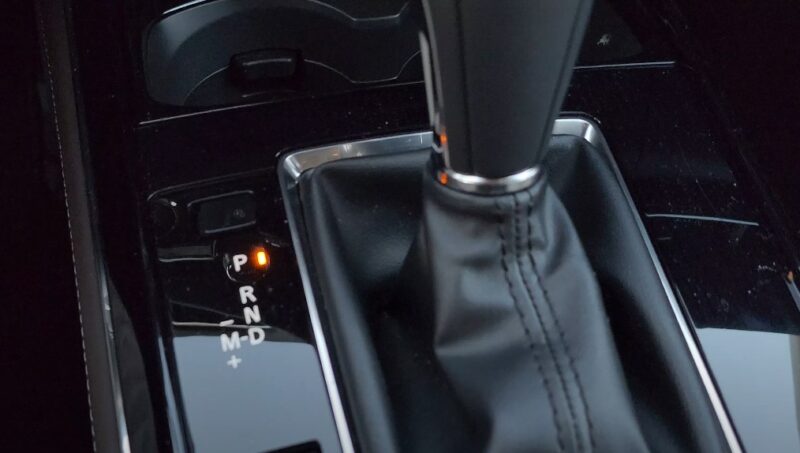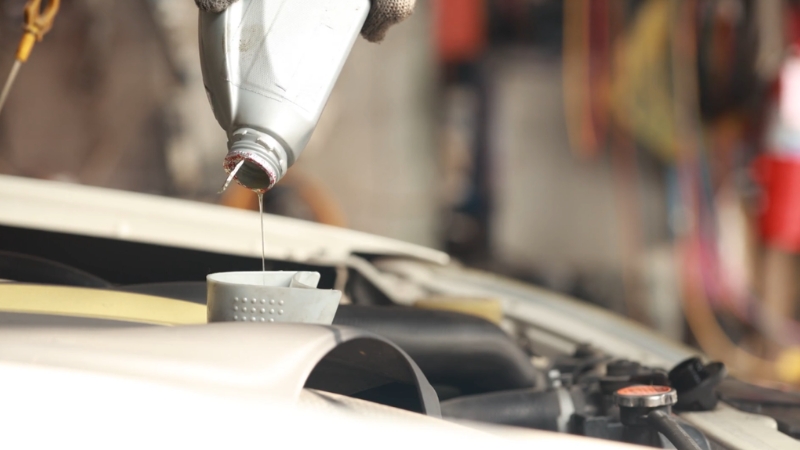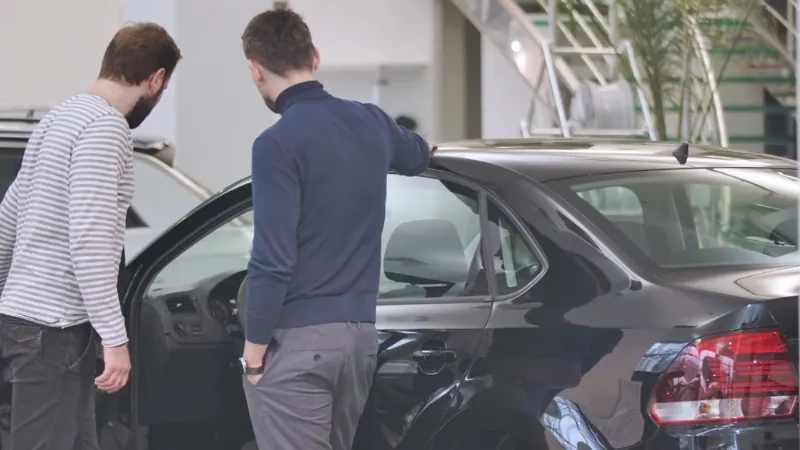
Share Post:
Have you ever been sitting in your car, glancing down at the gear shift, and noticed the “M” on there? If so, you’re not alone.
It’s something that has popped up more and more in modern cars, especially as manufacturers work to give us the best of both worlds: the ease of automatic driving with a dash of control that manual shifting offers.
So what exactly is that “M,” and why is it even there? Let’s break it down.
Table of Contents
ToggleWhat Does “M” Stand For?

When you see the “M” on a gear shift, it typically stands for “Manual” or “Manual Mode.” Even if your car is automatic, that little “M” brings a taste of manual driving to the table.
It gives you the ability to take control over the gear shifts manually but without the hassle of having to work a clutch. You’re probably thinking, “Wait, so I can shift like I would in a manual car, but without the extra pedal?” Exactly!
Why Would I Want to Use Manual Mode?
You might be wondering why anyone would bother with manual shifting if the car can do it automatically. Isn’t that the whole point of having an automatic transmission?
Well, manual mode serves a very specific purpose, and depending on your driving style or what you’re doing, it can come in pretty handy.
1. Enhanced Driving Control
One big reason drivers like manual mode is the control it gives over the vehicle’s performance. Picture this: you’re driving through hilly terrain, or you’re towing a heavy load.
In those situations, having the car in automatic mode may not be the best option. The car might shift gears when you don’t want it to, or the gear selection might not give you the torque you need.
2. Fuel Efficiency
Believe it or not, shifting manually can also help with fuel economy. On highways or long stretches of flat road, being able to lock into a higher gear can help conserve fuel.
While your car’s automatic transmission generally does a good job of managing fuel efficiency, having that extra bit of control allows you to fine-tune your driving for better results.
3. Sporty Driving Experience
There’s a certain excitement that comes with feeling more connected to your car, especially for those of us who really enjoy driving.
Manual mode gives a sportier vibe to the experience because you’re in charge of how the car behaves in terms of speed, acceleration, and overall performance.
It’s no surprise that sports cars and high-performance vehicles often emphasize the thrill of manual shifting, even when equipped with automatic transmissions.
How Does Manual Mode Actually Work?

So, you know what “M” is for, but how does it all come together when you’re driving? It’s simpler than it sounds, but there are a few things you need to know about how it operates.
Shift Lever and Paddle Shifters
Once you put your car into “M” mode, you’ll generally have two options for shifting: using paddle shifters or the gear stick.
- Paddle Shifters: These are typically found behind the steering wheel and let you shift gears by pulling on the “+” (upshift) or “-” (downshift) paddles. It’s like having control at your fingertips. No need to take your hands off the wheel—just a quick flick, and you’re onto the next gear.
- Gearstick Shift: If your car doesn’t have paddle shifters, or if you prefer the feel of the gearstick, you can usually shift by moving the gear lever forward to upshift or backward to downshift.
Pre-Programmed Gears
In manual mode, you’re working with a set number of gears—usually between 5 and 9, depending on your car. Even though you’re manually shifting, the car still has some safety mechanisms in place.
For instance, you can’t downshift into a gear that would damage the engine at high speeds, and if you forget to upshift, the car will take over before your RPMs get too high.
It’s like having a safety net that lets you enjoy manual shifting without worrying about hurting your car.
When to Use Manual Mode
Now that you know what it is and how it works, let’s look at some situations where manual mode really shines. You might not use it every day, but it can be a game-changer in certain scenarios.
Downhill Driving
When going downhill, it’s common for automatic transmissions to rely heavily on the brakes. This can cause them to overheat if used for too long.
By shifting into manual mode and using engine braking (downshifting to a lower gear), you can maintain a steady speed without burning out your brakes.
Uphill Driving
If you’ve ever driven up a steep hill and felt your car awkwardly shifting gears back and forth, manual mode could be your best friend.
Keeping the car in a lower gear allows for smoother power delivery and better control. No more jerky gear shifts when you least expect it!
Towing or Hauling Heavy Loads
Towing a trailer or carrying a heavy load can put extra strain on your vehicle. When in automatic mode, the car may not always choose the best gear to handle the increased weight.
Manual mode gives you the ability to hold a lower gear, ensuring you have enough power and torque to handle the job smoothly.
How “M” Mode Differs Across Car Brands

Not all “M” modes are created equal. Different car manufacturers have their own take on what manual mode should be and how it should feel. Let’s explore how a few well-known brands approach it.
BMW
In BMWs, especially their M-series models, the “M” stands for Motorsport. It’s designed for performance driving, and their version of manual mode is typically accompanied by high-end paddle shifters and sport-tuned automatic transmissions.
The goal here is to give drivers a race-like experience, where they can control shifts without compromising the car’s powerful, sporty nature.
Ford F-150
@benhardycars @Ford Motor Company new shifter in the F-150! #ford #fordlife #fordlove #fordtrucks #fordf150 #fordforthebuilders #shifter #fordwatchme ♬ original sound – Ben Hardy Cars
For a truck like the Ford F-150, the “M” on the gear shift is particularly useful for towing and navigating tough terrains. Ford offers manual control via buttons or paddles, making it easier for drivers to handle heavy loads or tricky surfaces. Also, Ford offers the same function on company’s new EV models.
Toyota
Toyota’s manual mode gives drivers a way to shift through a set number of gears (usually 6 or 7) manually. While here, check how to turn off maintenance light on Toyota Tacoma.
It’s especially beneficial for drivers who want to adjust their driving style based on terrain, like in mountainous areas or when you’re dealing with traffic where smoother gear transitions are needed.
Is Manual Mode the Same as a Full Manual Transmission?

Nope, manual mode in an automatic car isn’t the same as driving a fully manual vehicle. A traditional manual transmission requires the use of a clutch pedal along with the gear shift.
In manual mode, however, the clutch function is automated, so you’re really just managing the gear selection. It’s a simplified version of manual driving, ideal for those who want more control but aren’t looking to handle a third pedal.
Wrapping it Up
Manual mode offers a perfect middle ground for drivers who love the ease of automatic transmissions but want a little more say in how their car behaves.
It’s useful for driving in hilly areas, towing, or simply enhancing the overall driving experience with added control. Plus, it can improve fuel efficiency and performance in ways that full automatic driving sometimes misses.
So next time you see that “M” on your gear shift, don’t hesitate to try it out—you just might find that it makes your drive a little more exciting and tailored to your needs.
Related Posts:
- Car Leaking Oil? Here's What You Need to Know and…
- The All-Electric 2025 Cadillac Escalade IQ - What…
- Nissan Dashboard Warning Lights - What They Mean and…
- Difference Between 275 and 295 Tires – The Only…
- 5 Most Exciting Spec Racing Cars You Need to See in 2025
- The DeLorean Is Back - But You’ll Need Crypto to Get One








